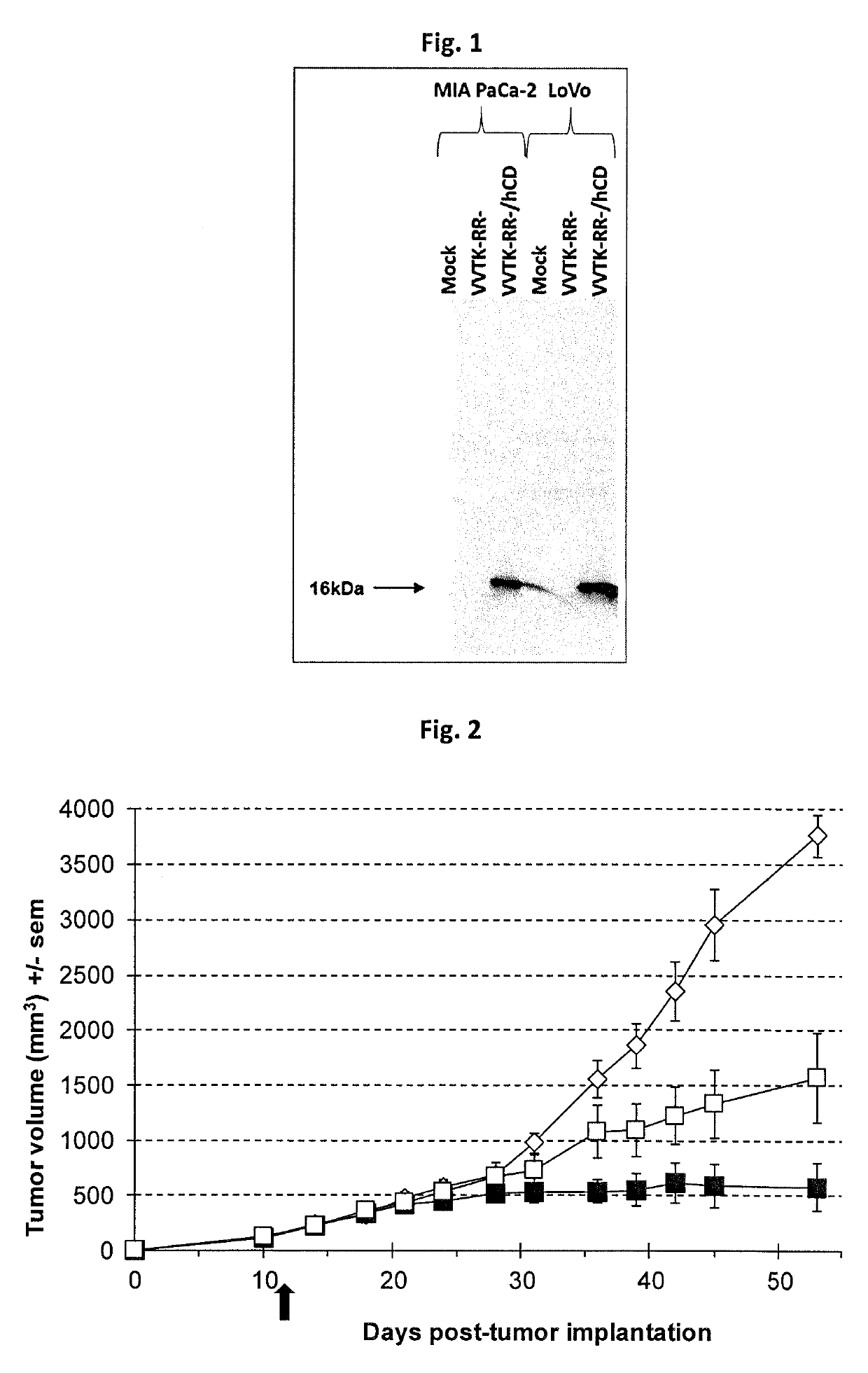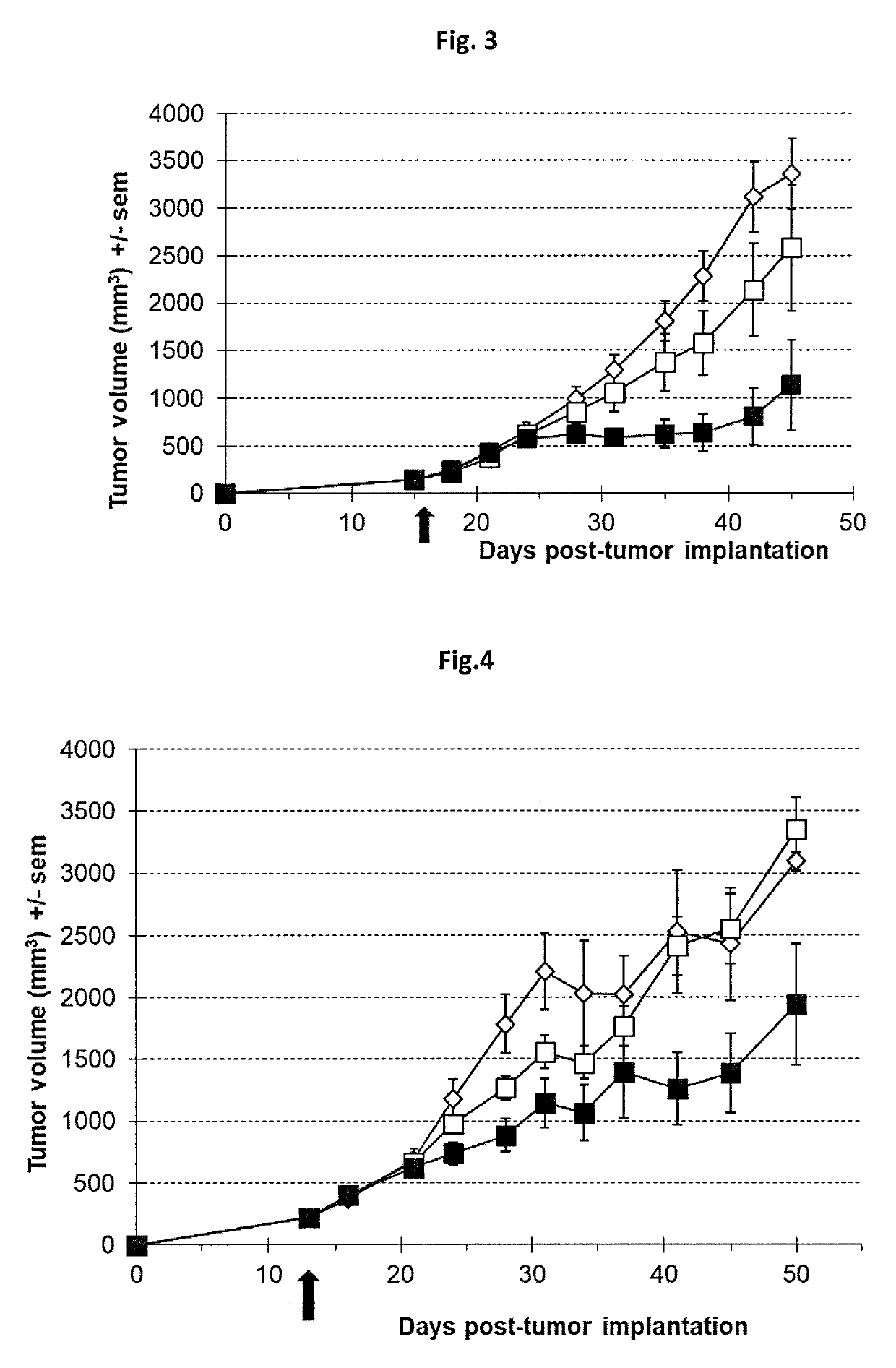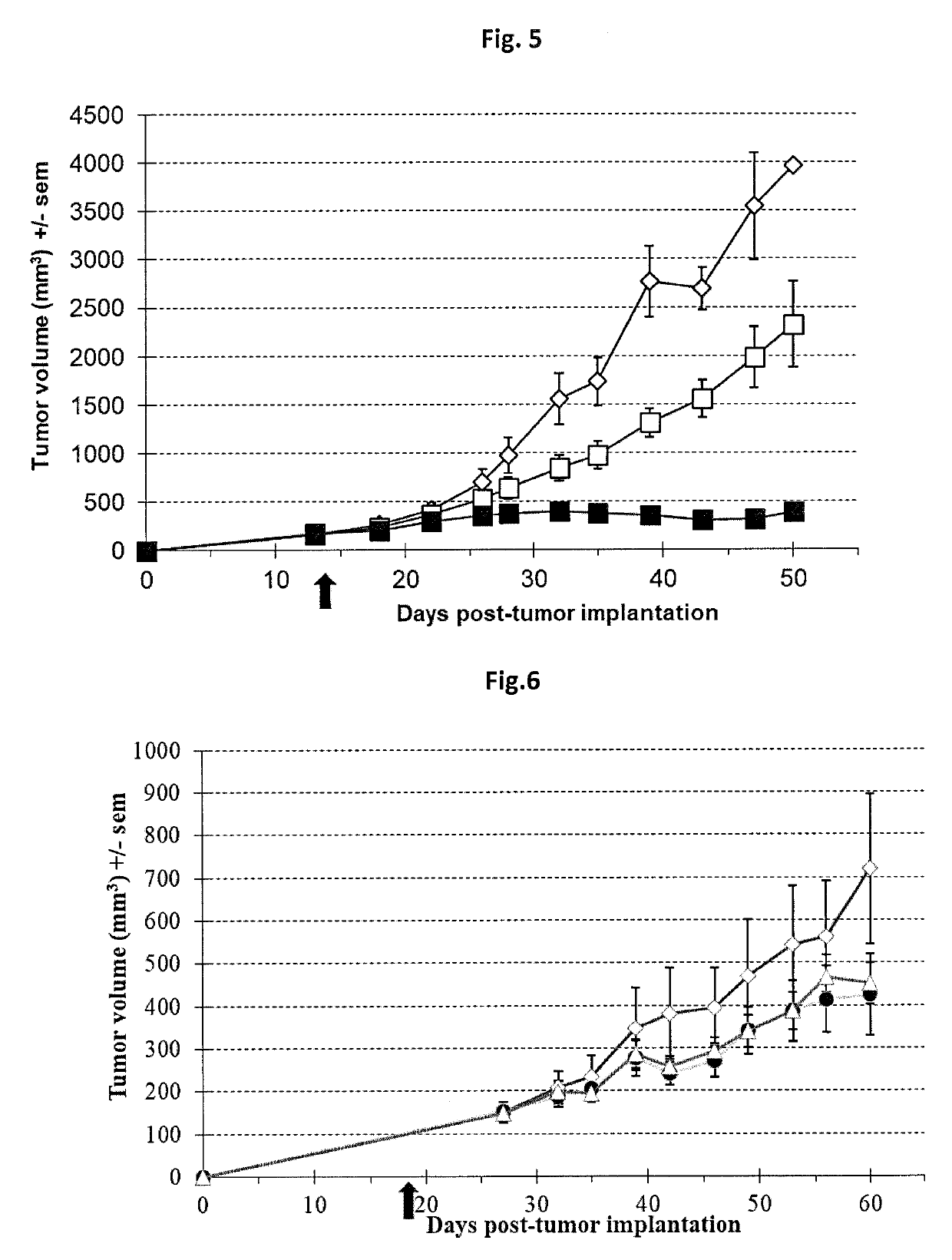Oncolytic viruses and therapeutic molecules
a technology of oncolytic viruses and therapeutic molecules, applied in the direction of dsdna viruses, drug compositions, cardiovascular disorders, etc., can solve the problems of reducing the overall response, reducing the survival rate of patients, and reducing the effect of tumor reduction
- Summary
- Abstract
- Description
- Claims
- Application Information
AI Technical Summary
Benefits of technology
Problems solved by technology
Method used
Image
Examples
examples
[0171]Materials & Methods
[0172]Viruses and Cells
[0173]All recombinant viruses used in this study are double deleted thymidine kinase (J2R) and ribonucleotide reductase (14L) vaccinia viruses derived from the Copenhagen strain. VVTK-RR- / GFP is the double deleted vaccinia virus expressing the gene marker GFP (for Green Fluorescent Protein). VVTK-RR- / CDD1 is the double deleted vaccinia virus expressing the yeast cytidine deaminase CDD1 gene (Kurtz et al., 1999, Curr. Genet., 36(3):130-6). VVTK-RR- / hCD is the double deleted vaccinia virus expressing the human cytidine deaminase CDA cDNA (Laliberté et Momparler, 1994, Cancer Res., 54(20):5401-7). VVTK-RR- / APOBEC2 is the double deleted vaccinia virus expressing the human APOBEC2 gene. GFP, CCD1, hCD and APOBEC2 genes are inserted in the thymidine kinase locus and placed under the control of the p11K.5 promoter. Virus structures were confirmed by multiple PCRs. Final recombinant vaccinia viruses were amplified in primary chicken embryo fib...
PUM
| Property | Measurement | Unit |
|---|---|---|
| Fraction | aaaaa | aaaaa |
| Immunostimulation | aaaaa | aaaaa |
Abstract
Description
Claims
Application Information
 Login to View More
Login to View More - R&D
- Intellectual Property
- Life Sciences
- Materials
- Tech Scout
- Unparalleled Data Quality
- Higher Quality Content
- 60% Fewer Hallucinations
Browse by: Latest US Patents, China's latest patents, Technical Efficacy Thesaurus, Application Domain, Technology Topic, Popular Technical Reports.
© 2025 PatSnap. All rights reserved.Legal|Privacy policy|Modern Slavery Act Transparency Statement|Sitemap|About US| Contact US: help@patsnap.com



